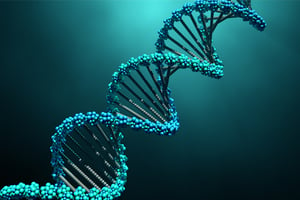 Genomic DNA extraction is an important part of the process when it comes to studying DNA. Pure DNA, separated from the proteins and fluid of cells, is needed on its own in order to be used for various molecular applications. These analyses can include cloning, sequencing, electrophoresis, and fingerprinting.
Genomic DNA extraction is an important part of the process when it comes to studying DNA. Pure DNA, separated from the proteins and fluid of cells, is needed on its own in order to be used for various molecular applications. These analyses can include cloning, sequencing, electrophoresis, and fingerprinting.
The process of genomic DNA extraction is fairly straightforward, incorporating three basic steps: lysis, precipitation and purification.
Lysis
In order to extract genomic DNA, it’s necessary to separate the cells in a sample. This is usually done physically but can also be done chemically although it is less common. Ways to mechanically separate cells include blending, grinding, and vortexing. Next, the cells are placed into a saline solution, in order to protect the negatively charged phosphate groups in the DNA. A detergent or enzyme such as Proteinase K is added to this suspension to break down the lipids of the cell membrane and nuclei and free DNA.
Precipitation
Next, the freed DNA sample needs to be isolated from the cellular debris left over from the mechanical separation. Precipitation helps remedy this. First, the sample must be cleaned through filtration of the sample or the addition of a protease, an enzyme that helps break down the cellular protein. Then the sample is precipitated with ice-cold alcohol. Since the sample was suspended in a saline solution, the DNA is not soluble once the alcohol is added. The alcohol is carefully added and stirred, resulting in the DNA separating. This precipitate will become visible and can now be extracted.
Purification
Now that the DNA is separated from the aqueous component, it can be cleaned even more thoroughly. This purification can be done by rinsing the sample with more alcohol, which will clear any remaining cellular debris. Once purified, the genomic DNA sample is typically resuspended in water or an alkaline buffer so that it can be easily transported, tested, or stored. After purification, it’s important to test the genomic DNA sample in order to assess the quality and purity. This can be done by assessing ultraviolet absorbance. This is usually accomplished through the use of a spectrophotometer.
Rely on G-Biosciences for All Your Genomic DNA Extraction Needs
At G-Biosciences, we offer a selection of genomic DNA extraction kits and supplies to meet a wide array of applications. Browse through our products and then contact us with any questions or to place an order.






